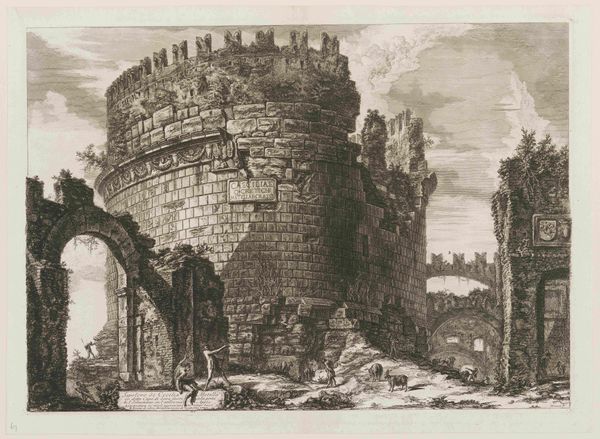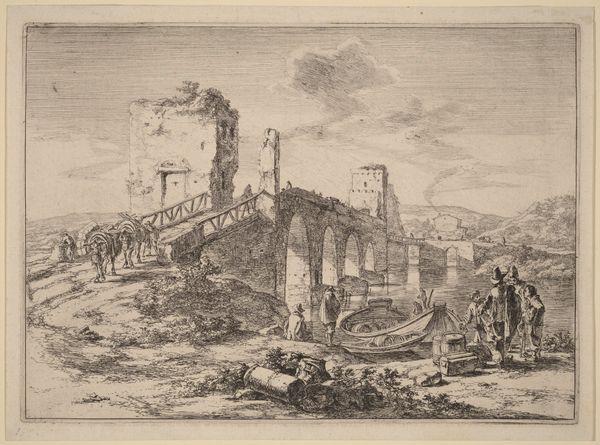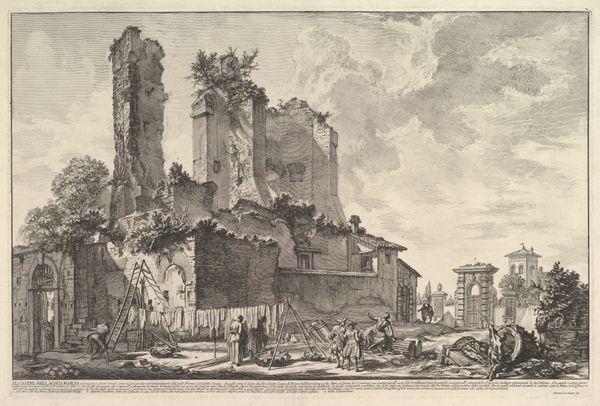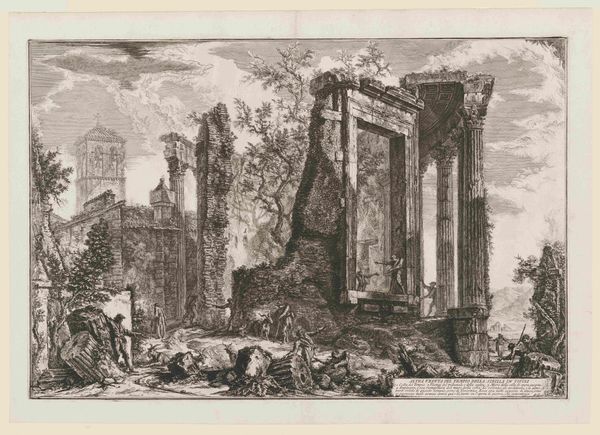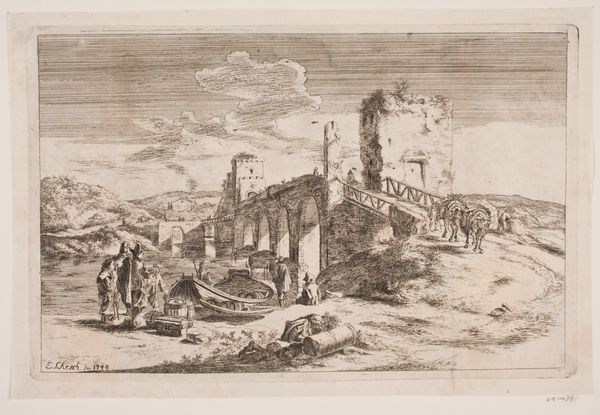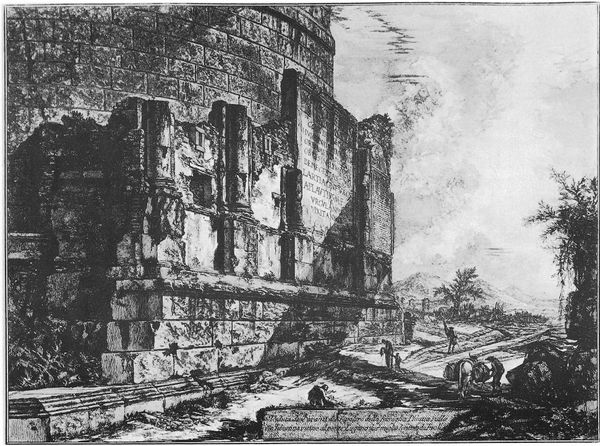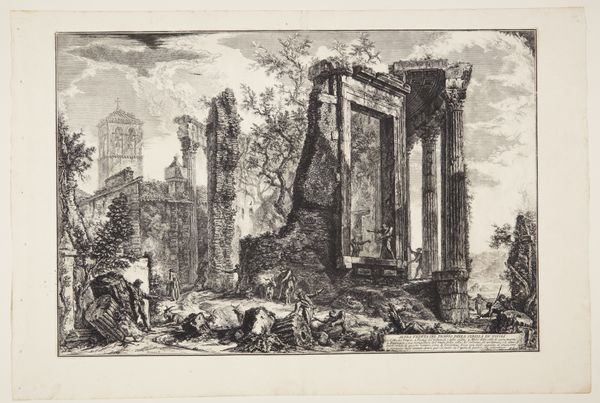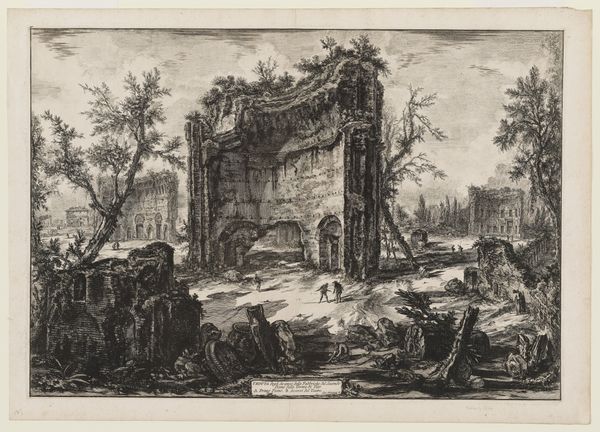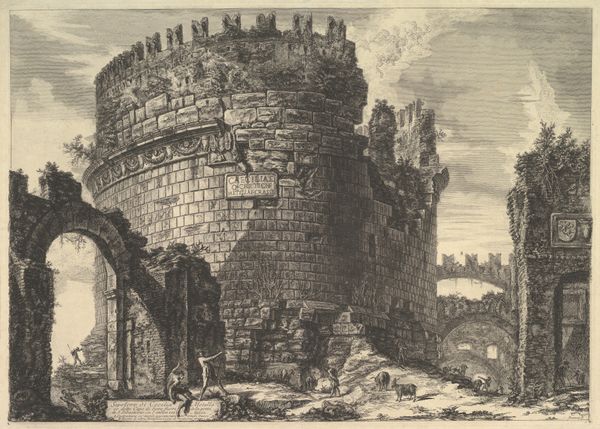
graphic-art, print, etching, engraving
#
graphic-art
# print
#
etching
#
landscape
#
romanesque
#
ancient-mediterranean
#
engraving
Dimensions: 18 5/16 x 24 13/16 in. (46.51 x 63.02 cm) (plate)19 11/16 x 26 7/16 in. (50.01 x 67.15 cm) (sheet)
Copyright: Public Domain
Editor: We’re looking at Giovanni Battista Piranesi's "Tomb of the Plautii," an etching and engraving from 1761. I find the sheer scale of the ruins overwhelming, and there’s a sense of the past bearing down on the present. What layers of meaning do you see in this work? Curator: I see a powerful statement about power, history, and colonialism. Piranesi's dramatic depiction of this tomb isn’t just about historical documentation; it's an engagement with the grand narratives of Roman power. He is using the spectacle of ruins to invite critique. Look at the contrast he creates between the monumentality of the ruins and the small figures in the landscape. What might that juxtaposition suggest? Editor: Perhaps it suggests the insignificance of the present compared to the grand past? Or maybe it speaks to how the past still shapes and defines the present? Curator: Precisely. The tomb stands as a symbol of an empire built on conquest and subjugation. By emphasizing the decaying grandeur, Piranesi invites us to question the legacies of such empires. How does the artistic choice of etching contribute to the overall message of decay and historical reflection? Editor: Well, the intricate lines of the etching create a sense of texture and age. The crumbling stones and overgrown vegetation suggest time wearing down even the most imposing structures. Curator: Right. And it asks: Whose stories are etched into these stones? Whose are forgotten? And how do we engage with the past to build a more just future? This isn't just a landscape; it’s an intersectional commentary on history and its impact. Editor: This has completely changed how I view this print. I initially saw it as a picturesque scene, but now I recognize the artist is compelling us to examine the weight of history and the power dynamics embedded within these ruins. Curator: Exactly. Art becomes a tool to dismantle dominant narratives. By prompting critical thinking, art has the ability to dismantle previously built assumptions.
Comments
No comments
Be the first to comment and join the conversation on the ultimate creative platform.

